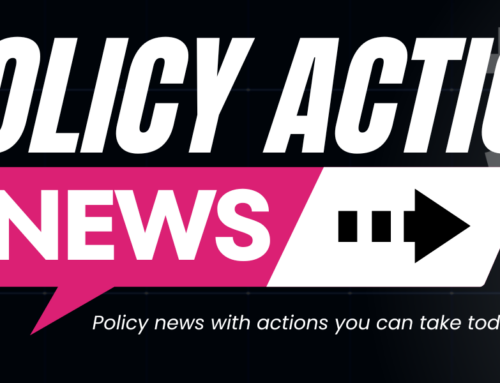**FOR IMMEDIATE RELEASE**
Contact: Jennie Smith-Camejo, jsmithcamejo@pwn-usa.org / 347-553-5174
December 2, 2015 – Yesterday, on World AIDS Day 2015-a day to remember the millions who have died of HIV-related causes over the past three decades, honor long-term survivors, and to strategize the way forward toward an HIV-free generation-the White House Office of National AIDS Policy (ONAP) released the Federal Action Plan of the newest version of the US National HIV/AIDS Strategy (NHAS, or Strategy), outlining key steps various federal agencies will take toward addressing the domestic HIV epidemic. President Obama is the first US President to create and implement a comprehensive plan to address the domestic HIV epidemic, and Positive Women’s Network – USA (PWN-USA), a national membership body of women living with HIV, applauds the Obama Administration’s continued commitment to address the HIV epidemic and its disparities.
“The federal action plan demonstrates some commitments to improving the health and quality of life of people living with HIV,” says Naina Khanna, Executive Director of PWN-USA. “We are particularly pleased that action steps are mentioned to address some critical needs for highly impacted populations, including the integration of behavioral health and supportive services with primary care, and activities that will support identification and healing from trauma and interpersonal violence (IPV) experienced by people living with HIV. We are also encouraged that the Department of Justice will advise states to modernize or repeal HIV-specific laws that unfairly criminalize people living with HIV. These are advances that advocates, including members of PWN-USA and allies we collaborate closely with, have been fighting for for years.”
Indeed, the plan reflects progress in several crucial areas that PWN-USA has long championed. It calls for implementation science and translational research for prevention and treatment in transgender women, and specifically promises a pilot study of IPV services in behavioral health settings for trans women. Under the plan, an inventory of federally funded trauma-informed programs as well as lessons learned from federally-funded grantee prevention and care programs for women and girls will be created; IPV screening capacity in clinics receiving grants from the Health Resources and Services Administration (HRSA) will be expanded; and crucially, IPV-related services will be implemented in primary health settings, including health centers serving people living with HIV. The Equal Employment Opportunity Commission (EEOC) will do outreach and provide technical assistance to the states in addressing employment discrimination against people living with HIV. The plan also shows an expanded commitment to research and development of new prevention modalities for women and men, including treatment as prevention and a focus on connecting at-risk populations to pre-exposure prophylaxis (PrEP).
PWN-USA commends ONAP for its progress on these critical issues. However, there are still shortcomings in the implementation plan that we hope to see actively addressed over the next five years. For example, while the plan calls for creating an online mapping tool to show women living with HIV where Title X and Ryan White-funded clinics are located, we firmly believe sexual and reproductive healthcare services should be fully integrated into primary care settings for all people living with HIV. Also, while NHAS 2020 discusses discrimination of many types, e.g., employment, healthcare, housing, and the provision of prevention services, the emphasis is on enforcement of federal laws rather than prevention of discrimination. A change in internal policies and practices of institutions, organizations and programs coupled with enforcement will ensure stronger protections for all people living with HIV, including trans women, who face the highest levels of discrimination in employment and housing. We remain concerned at the lack of clear mechanisms for the involvement and leadership of people living with HIV in the ongoing implementation, monitoring and evaluation of NHAS.
Equally concerning are key populations that are either left out completely–like sex workers–or for whom the plan does not do enough. Paradoxically, the plan appears to call for testing, prevention and treatment of immigrant populations only in the context of detention facilities rather than addressing systemic barriers to prevention, care, treatment for immigrants, as well as problematic policing practices that might place immigrants in detention facilities in the first place.
“This federal action plan represents real progress toward ending the disparities in health outcomes among people living with HIV and, more broadly, toward ending the epidemic,” remarks Khanna. “It clearly shows the effectiveness of–and need for–advocacy from people living with HIV. We still have a long way to go, and as people living with HIV, we must continue to hold all the concerned agencies and the next Administration accountable for keeping the promises of the NHAS–and filling in the gaps that remain.”
###




[…] the Obama Administration’s Office of National AIDS Policy (ONAP) released its highly anticipated Federal Action Plan to implement the National HIV/AIDS Strategy 2020 (NHAS) unveiled this July. While the Action Plan […]
[…] the Obama Administration’s Office of National AIDS Policy (ONAP) released its highly anticipated Federal Action Plan to implement the National HIV/AIDS Strategy 2020 (NHAS) unveiled this July. While the Action Plan […]